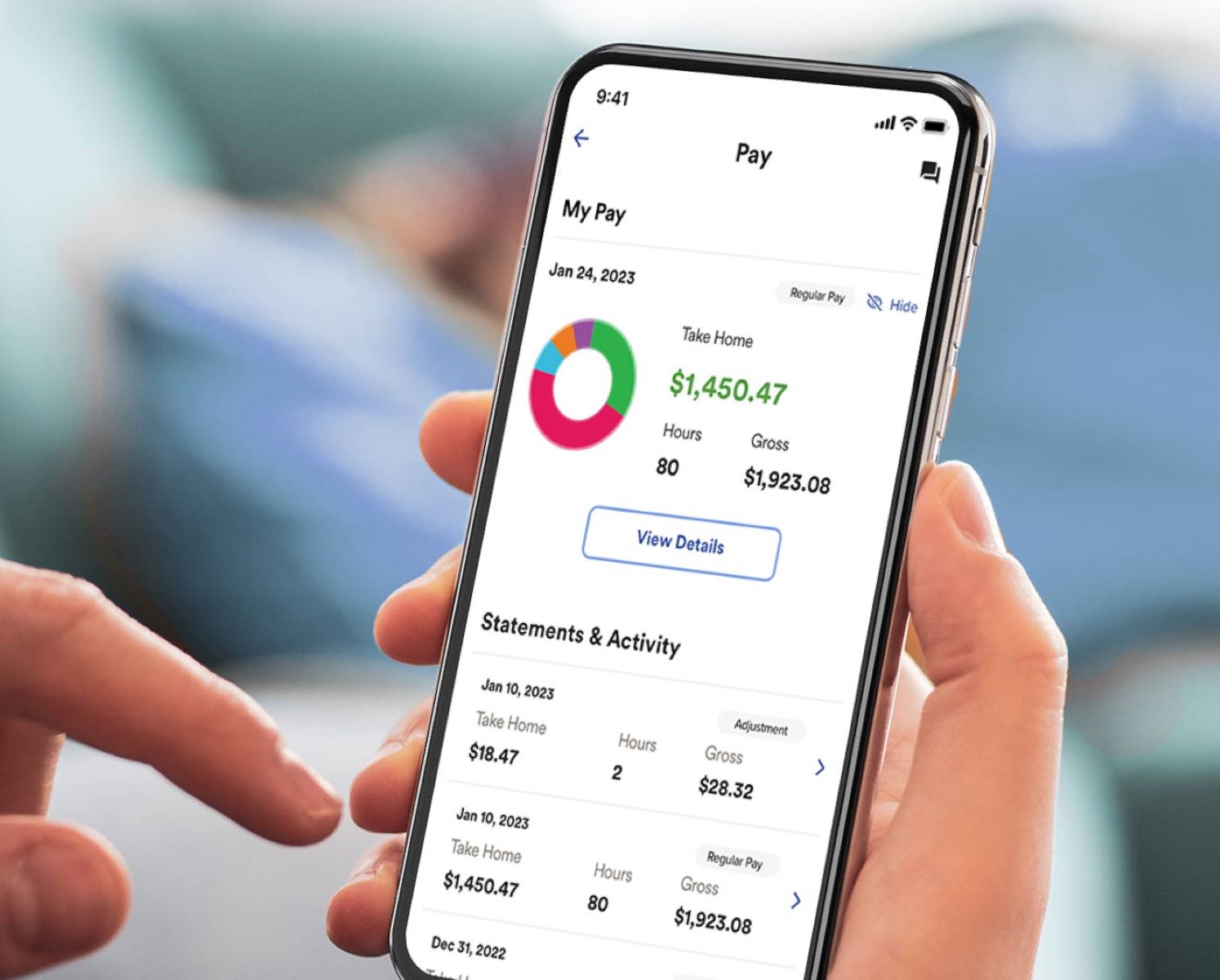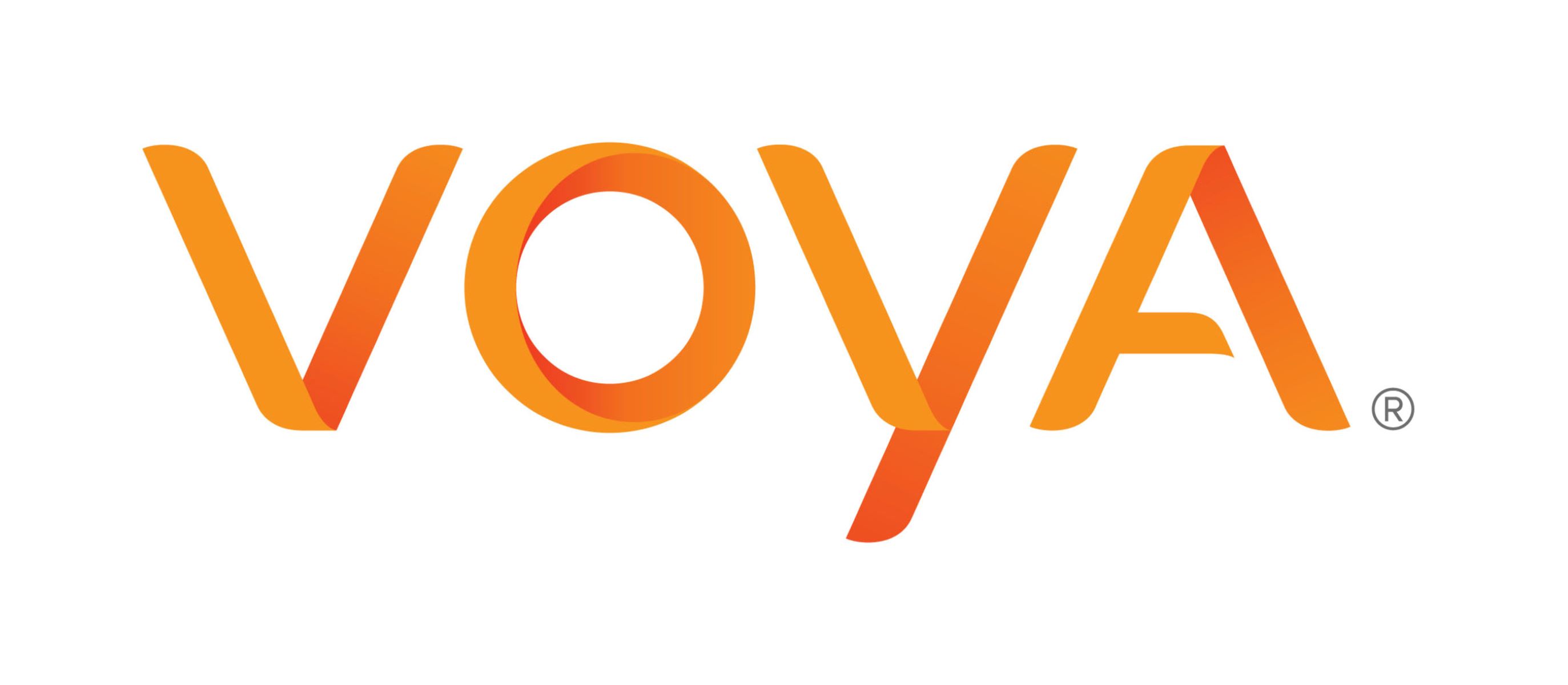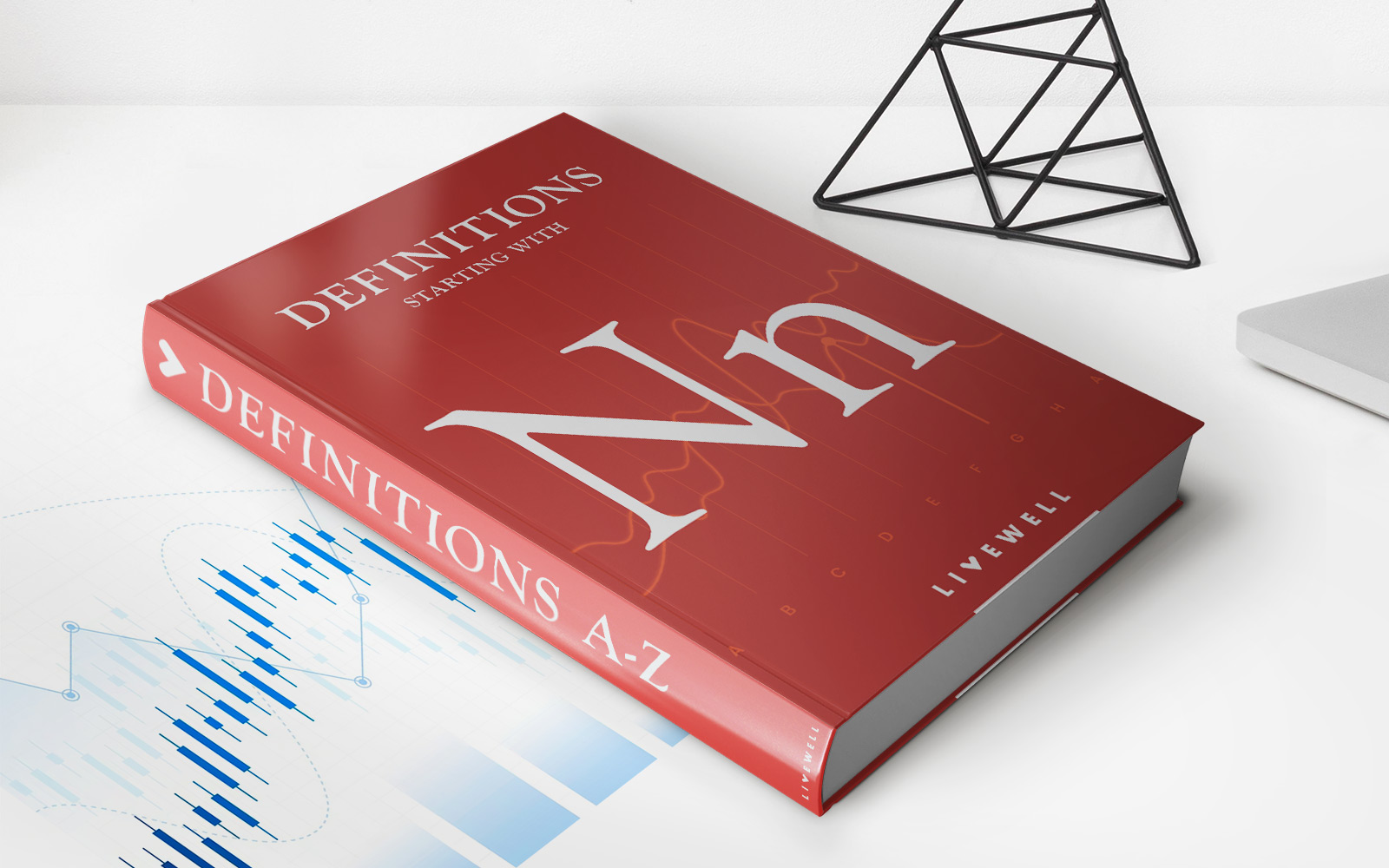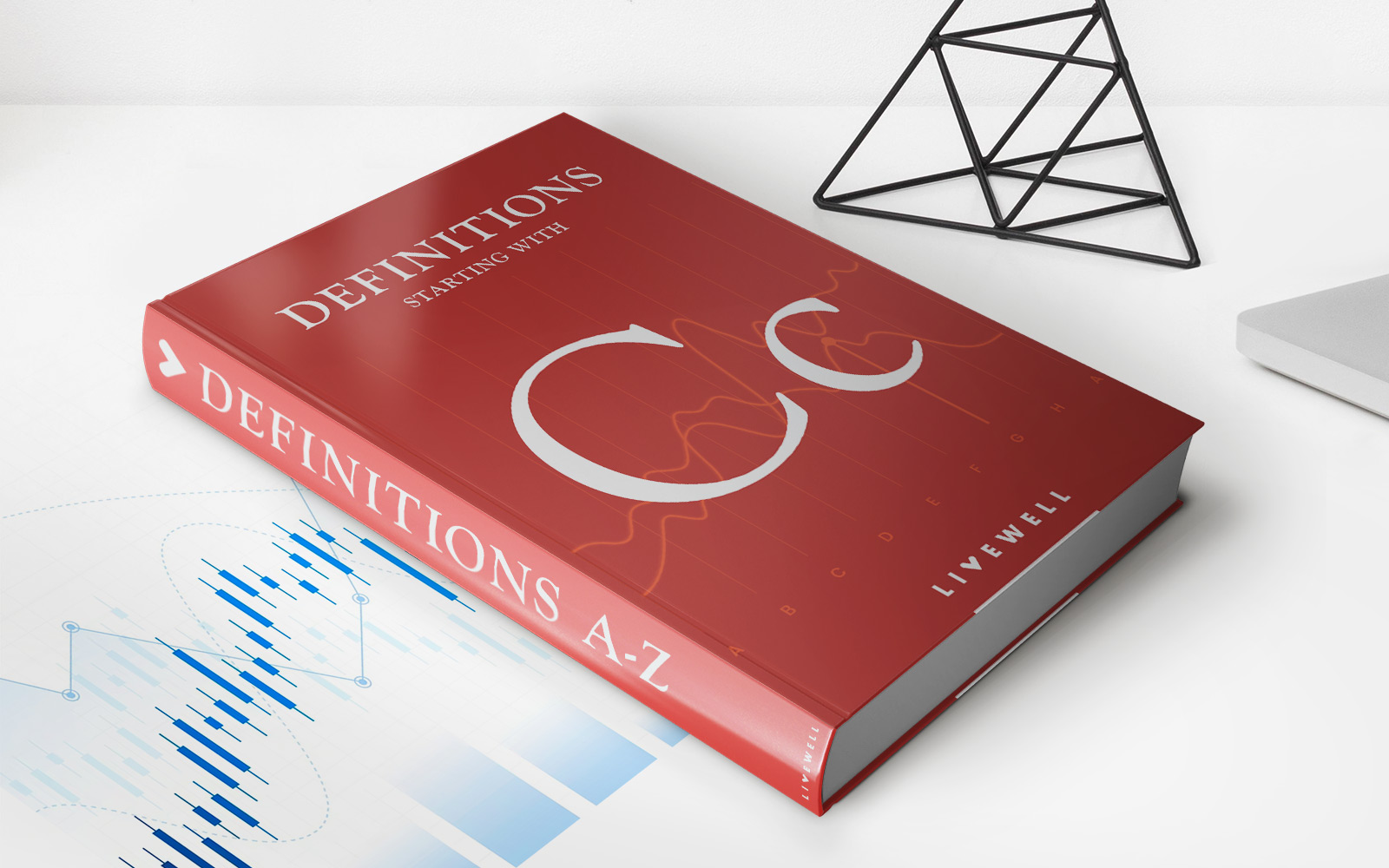

Finance
How To Rollover 401K From ADP
Modified: February 21, 2024
Looking to rollover your 401K from ADP? Learn how to make a smooth transition and secure your financial future with our helpful finance guide.
(Many of the links in this article redirect to a specific reviewed product. Your purchase of these products through affiliate links helps to generate commission for LiveWell, at no extra cost. Learn more)
Table of Contents
- Introduction
- What is a 401K Plan?
- ADP and 401K Plans
- Reasons for Rollover
- Steps to Rollover a 401K from ADP
- Review your current 401K plan
- Evaluate your rollover options
- Choose a new retirement account
- Contact the new retirement account provider
- Complete the rollover paperwork
- Submit the rollover request to ADP
- Monitor the rollover process
- Confirm successful rollover
- Considerations and Tips for Rollover
- Conclusion
Introduction
Are you considering a 401K rollover from ADP? Congratulations on taking a proactive step towards securing your financial future. Making strategic decisions about your retirement savings is crucial, and understanding the process of rolling over your 401K is essential.
A 401K plan is a retirement savings account offered by employers to their employees. It allows individuals to contribute a portion of their salary towards their retirement fund, with the contributions being tax-deferred until withdrawal. ADP, a reputable and well-known payroll and human resources solution provider, often administers 401K plans for companies.
While ADP provides excellent support for managing your 401K, you may decide to rollover your funds for various reasons, such as changing jobs, consolidating retirement accounts, or seeking more investment options. Rolling over your 401K from ADP allows you to transfer your savings to a new retirement account without incurring taxes or penalties.
In this article, we will guide you through the process of rolling over your 401K from ADP. We will provide step-by-step instructions, share essential considerations, and offer useful tips to ensure a smooth and successful rollover. By the end of this article, you will have the knowledge and confidence to make informed decisions about your retirement savings.
What is a 401K Plan?
A 401K plan is a retirement savings account sponsored by employers in the United States. It is named after Section 401(k) of the Internal Revenue Code, which outlines the rules and regulations governing these plans. Simply put, a 401K plan allows employees to set aside a portion of their pre-tax income for retirement, with the contributions being deducted directly from their paycheck.
One of the most significant advantages of a 401K plan is the ability to contribute funds on a pre-tax basis. This means that the money you contribute to your 401K account is deducted from your taxable income, reducing your current tax liability. Additionally, the earnings on your 401K investments grow tax-deferred until you make withdrawals in retirement.
Employers often provide a matching contribution to employees’ 401K accounts, which further boosts the account balance. Many employers match a percentage of the employee’s contribution, up to a certain limit. This employer match is essentially free money that accelerates your retirement savings.
Contributions made to a 401K account are invested in a range of investment options, such as stocks, bonds, mutual funds, and target-date funds. The specific investment options available may vary depending on the plan provider and the employer’s choice.
It’s important to note that there are contribution limits for 401K plans. For 2021, the maximum amount an individual can contribute to their 401K account is $19,500. For individuals aged 50 and above, an additional catch-up contribution of $6,500 is allowed, making the total contribution limit $26,000. These limits are set by the Internal Revenue Service (IRS) and are subject to change over time.
While 401K plans offer numerous benefits, it’s essential to understand the rules and limitations associated with them. Withdrawals from a 401K account before the age of 59 ½ may incur taxes and penalties. Additionally, there may be restrictions on accessing the funds while still employed with the sponsoring employer.
Now that you have a basic understanding of what a 401K plan entails, let’s delve into the specific details of rolling over your 401K from ADP to a new retirement account.
ADP and 401K Plans
ADP (Automatic Data Processing) is a leading provider of payroll processing, human resources, and benefits administration services. Many employers choose ADP to administer their employee benefits, including 401K plans. ADP offers a comprehensive platform that allows employees to contribute to their retirement savings and access essential tools for managing their 401K accounts.
ADP’s 401K plan administration services include features such as automated enrollment, contribution management, investment selection, and online access to account information. Employers can customize the plan design to meet the specific needs of their workforce and offer a range of investment options to employees.
For employees, ADP provides an intuitive and user-friendly interface to manage their 401K accounts. They can easily access their account information, review contribution details, adjust investment allocations, and make investment elections. ADP’s platform also offers helpful resources and educational materials to assist employees in making informed decisions about their retirement savings.
Additionally, ADP ensures compliance with the applicable regulations and laws governing 401K plans. They handle tasks such as plan document preparation, compliance testing, and filing necessary reports with regulatory agencies. ADP’s expertise and dedication to regulatory compliance provide peace of mind to employers and employees alike.
However, there may be situations where you decide to rollover your 401K from ADP to a new retirement account. This could be due to changing jobs, seeking better investment options, or consolidating multiple retirement accounts. Rolling over your 401K allows you to maintain the tax-advantaged status of your funds while gaining more control and flexibility over your retirement savings.
When considering a rollover, it’s important to be aware of any fees or restrictions associated with your ADP 401K plan. Review the plan’s terms and conditions, including withdrawal policies and any penalties that may apply. By understanding the specifics of your ADP 401K plan, you can make informed decisions and ensure a seamless rollover process.
In the next section, we will explore the reasons why individuals choose to rollover their 401K accounts and discuss the steps involved in the rollover process.
Reasons for Rollover
There are several reasons why individuals decide to roll over their 401K accounts from ADP to a new retirement account. Understanding these reasons can help you determine if a rollover is the right choice for you. Here are some common motivations for rolling over your 401K:
- Job Change: When you change jobs, you have the option to rollover your 401K from your previous employer’s plan to a new retirement account. Rolling over allows you to consolidate your retirement savings into a single account, making it easier to manage and potentially giving you access to a wider range of investment options.
- Investment Flexibility: Your ADP 401K plan may have limited investment options. By rolling over your 401K, you can move your funds to a new retirement account that offers a broader array of investment choices. This flexibility enables you to align your investments with your financial goals and risk tolerance.
- Lower Fees: Some 401K plans, including those administered by ADP, may have higher fees compared to other retirement account options. By rolling over your 401K, you can potentially reduce the fees associated with your retirement savings, which can have a positive impact on your long-term investment returns.
- Simplified Account Management: If you have multiple retirement accounts from different employers, it can be challenging to keep track of them all. Rolling over your ADP 401K to a new account allows you to consolidate your savings, making it easier to monitor and manage your retirement funds.
- Access to More Services: Certain retirement account providers offer additional services and benefits beyond what ADP may provide. These can include financial planning assistance, educational resources, and robust online tools. By rolling over your 401K, you may gain access to these value-added services that can enhance your retirement planning journey.
It’s important to note that rolling over your 401K is not mandatory. You have the option to leave your funds in your ADP 401K plan if it meets your needs and aligns with your retirement goals. However, understanding the potential benefits of a rollover can help you make an informed decision based on your individual circumstances.
Now that you have a clearer understanding of the reasons for rolling over a 401K account, let’s explore the step-by-step process of executing a rollover from ADP to a new retirement account.
Steps to Rollover a 401K from ADP
If you have made the decision to rollover your 401K from ADP to a new retirement account, follow these steps to ensure a smooth and successful rollover process:
- Review your current 401K plan: Take the time to understand the specifics of your ADP 401K plan, including any fees, investment options, and withdrawal policies. It’s important to gather all the necessary information before proceeding with the rollover.
- Evaluate your rollover options: Research and compare different retirement account options that are suitable for your needs. Consider factors such as investment choices, fees, customer service, and additional features. Common rollover options include Traditional IRA, Roth IRA, or a new employer’s 401K plan.
- Choose a new retirement account: Once you have evaluated your options, select the new retirement account where you want to rollover your ADP 401K funds. Consider factors such as account features, investment options, and the reputation of the account provider.
- Contact the new retirement account provider: Reach out to the new retirement account provider and inform them of your intention to rollover your ADP 401K funds. They will guide you through the necessary steps and provide you with any required paperwork or instructions.
- Complete the rollover paperwork: Fill out the necessary paperwork provided by the new retirement account provider. This may include account setup forms, rollover request forms, and beneficiary designation forms. Ensure that you carefully follow the instructions and provide accurate information.
- Submit the rollover request to ADP: Once you have completed the required paperwork, submit the rollover request to ADP. They will process the request and initiate the transfer of your funds to the new retirement account. Keep track of any associated timelines or deadlines provided by ADP.
- Monitor the rollover process: Stay engaged with both ADP and the new retirement account provider during the rollover process. Keep an eye on the progress and address any issues or concerns promptly. Maintain open communication and provide any additional information or documentation as requested.
- Confirm successful rollover: Once the rollover is complete, verify that the funds have been transferred successfully to your new retirement account. Review the account balances and ensure that all relevant transactions and investments are in order.
By following these steps, you can navigate the rollover process effectively and avoid any potential complications. However, it’s important to consult with a financial advisor or tax professional to ensure that you understand the implications of the rollover on your individual financial situation.
Next, we will discuss some additional considerations and provide useful tips to keep in mind when executing a 401K rollover from ADP.
Review your current 401K plan
The first step in rolling over your 401K from ADP is to thoroughly review your current 401K plan. Understanding the details of your ADP 401K will help you make informed decisions during the rollover process. Here’s what you need to consider:
- Plan Features: Take note of the specific features offered by your ADP 401K plan. This includes contribution limits, employer matching contributions, investment options, and any fees associated with the plan.
- Investment Performance: Evaluate the performance of the investments within your ADP 401K plan. Consider factors such as historical returns, risk levels, and diversification. This information will help you decide if you want to maintain or change your investment strategy during the rollover.
- Fees and Expenses: Understand the fees and expenses associated with your ADP 401K plan. This can include administrative fees, investment management fees, and any other added costs. Compare these fees with other retirement account options to determine if a rollover can potentially lower your expenses.
- Withdrawal Policies: Familiarize yourself with the withdrawal policies of your ADP 401K plan. Take note of any penalties or restrictions that may apply if you choose to withdraw funds before reaching the age of 59 ½ or leaving your current employer. This information will help you make informed decisions about the rollover timing.
- Outstanding Loans: If you have an outstanding loan from your ADP 401K, understand the terms and conditions associated with repayment. Determine if you need to repay the loan in full before proceeding with the rollover or if you have the option to continue loan repayment.
- Consider Employer Benefits: Some employers offer unique benefits or incentives tied to their 401K plans. Review any additional benefits you may have with your ADP 401K, such as profit-sharing contributions or employer stock. Consider the potential impact of a rollover on these benefits.
- Consult with a Financial Advisor: If you’re unsure about any aspects of your ADP 401K plan or the rollover process, consider seeking guidance from a financial advisor. They can provide personalized advice based on your individual financial goals and circumstances.
Reviewing your ADP 401K plan will ensure that you have a comprehensive understanding of the current state of your retirement savings and any potential implications of the rollover. This knowledge will empower you to make informed decisions as you progress through the rollover process.
Next, we will explore the second step in rolling over your 401K from ADP, which involves evaluating your rollover options and conducting thorough research.
Evaluate your rollover options
Once you have reviewed your current ADP 401K plan, it’s time to evaluate your rollover options. Understanding the different retirement account options available to you will help you decide where to transfer your funds. Consider the following factors when evaluating your rollover options:
- Traditional IRA: A Traditional Individual Retirement Account (IRA) allows you to make tax-deductible contributions, and your earnings grow tax-deferred until you make withdrawals in retirement. It offers a wide range of investment options and can be a suitable choice if you want to maintain the tax-advantaged status of your 401K funds.
- Roth IRA: A Roth IRA is funded with after-tax dollars, meaning you won’t receive an immediate tax deduction for your contributions. However, qualified withdrawals in retirement are tax-free. If you expect to be in a higher tax bracket in the future or want tax-free withdrawals, consider rolling over your 401K into a Roth IRA.
- New Employer’s 401K Plan: If you’re changing jobs and your new employer offers a 401K plan, you may be able to rollover your ADP 401K funds into the new plan. This option allows you to consolidate your retirement savings and take advantage of any employer matching contributions or preferred investment options available in the new plan. Assess the features and investment choices of the new plan before making a decision.
- Solo 401K or SEP IRA: If you are self-employed or a small business owner with no employees (other than a spouse), you may be eligible for a Solo 401K or Simplified Employee Pension (SEP) IRA. These plans offer higher contribution limits and flexibility for self-employed individuals. Consider the unique features and benefits of these options if you fall into this category.
- Financial Institution: You can also explore rollover options offered by various financial institutions, such as banks, brokerage firms, or mutual fund companies. These providers offer a wide range of retirement account options with different investment choices and services. Research and compare their offerings to find a suitable option for your rollover.
When evaluating your rollover options, consider factors such as fees, investment choices, customer service, online tools and resources, and overall reputation of the account provider. Assess how each option aligns with your retirement goals, risk tolerance, and financial needs.
It’s important to note that you can consult with a financial advisor to help you evaluate your rollover options. They can provide personalized guidance based on your individual circumstances and financial objectives.
After evaluating your rollover options, you’ll be ready to move forward with selecting a new retirement account. In the next step, we will discuss how to choose the best retirement account for your rollover.
Choose a new retirement account
Once you have evaluated your rollover options, it’s time to choose a new retirement account to transfer your ADP 401K funds. The right account for your rollover will depend on factors such as investment options, fees, customer service, and additional features. Here are some key considerations when selecting a new retirement account:
- Investment Choices: Look for a retirement account that offers a diverse selection of investment options that align with your risk tolerance and long-term financial goals. Consider whether you prefer individual stocks, mutual funds, index funds, or target-date funds.
- Account Fees: Pay attention to the fees associated with the new retirement account. Different providers have varying fee structures, including administrative fees, management fees, and transaction fees. Choose an account with fees that fit within your budget and won’t eat into your investment returns.
- Customer Service: Consider the quality of customer service provided by the account provider. Look for a retirement account with accessible and knowledgeable customer support, whether through phone, email, or online chat. Reliable customer service can be invaluable when you have questions or need assistance.
- Online Tools and Resources: Evaluate the available online tools and resources offered by the account provider. User-friendly platforms, educational resources, retirement calculators, and portfolio tracking tools can enhance your overall investing and retirement planning experience.
- Account Features: Assess any additional features offered by the retirement account. This could include automatic rebalancing, tax-loss harvesting, or the ability to set up automatic contributions. Consider which features are important to you and align with your financial preferences.
- Provider Reputation: Research the reputation and financial stability of the retirement account provider. Look for well-established and reputable institutions with a track record of delivering reliable services and secure account management. Reading user reviews and seeking recommendations can provide valuable insights.
Keep in mind that you may opt to transfer your ADP 401K funds to the same type of account (e.g., Traditional IRA to Traditional IRA) or choose a different account type (e.g., 401K to a Roth IRA). Your tax situation and investment preferences will play a role in determining the most suitable option.
It’s advisable to consult with a financial advisor or tax professional who can provide personalized guidance based on your specific financial goals and circumstances. They can help you navigate the complexities of different retirement account options and assist in selecting the best fit for your rollover.
Once you have chosen the new retirement account, you are ready to take the next steps in the rollover process. In the following sections, we will explore how to contact the new retirement account provider and complete the necessary paperwork to initiate the rollover.
Contact the new retirement account provider
After selecting a new retirement account for your rollover, the next step is to contact the account provider to initiate the process. Direct communication with the new retirement account provider is essential to ensure a smooth transition of your ADP 401K funds. Here’s what you need to do:
- Gather the provider’s contact information: Find the contact information for the new retirement account provider. This may include their phone number, email address, or online contact form. Visit their website or check any documentation provided to you during the rollover evaluation process.
- Prepare your questions and concerns: Before reaching out to the new retirement account provider, make a list of questions or concerns you have regarding the rollover process. This can include inquiries about account setup, required documentation, or any unique requirements they may have.
- Initiate contact: Reach out to the new account provider using the contact information you gathered. Call their customer service line or send an email to their designated department. Alternatively, you may find an online chat option on their website for direct communication.
- Introduce yourself and explain your intentions: When contacting the new retirement account provider, introduce yourself and explain that you are interested in rolling over your ADP 401K funds to their account. Provide any necessary details they may require, such as your name, account information, and current employer (if applicable).
- Ask for guidance and clarification: Seek guidance from the account provider regarding the rollover process. Inquire about the specific steps you need to take and any paperwork that needs to be completed. They will provide you with detailed instructions and may send you the necessary documents or direct you to their online portal.
- Discuss any special considerations: If you have any unique circumstances or considerations, such as outstanding loans or employer stock in your ADP 401K, discuss these with the new account provider. They can guide you on how these factors will be handled during the rollover process.
- Address any questions or concerns: Use this opportunity to ask any questions or address any concerns you have about the new retirement account. Inquire about their investment options, fee structure, account management tools, or any other relevant features that are important to you.
Remaining in direct contact with the new retirement account provider will ensure that you have a clear understanding of the rollover requirements and help you navigate the process efficiently. They will communicate timelines, deadlines, and any specific documentation needed to complete the rollover successfully.
Always keep a record of your communication with the new retirement account provider, including the names of the representatives you spoke with and the date and time of the conversation. This documentation can be helpful if any issues or discrepancies arise during the rollover process.
In the next step, we will discuss the completion of necessary paperwork to proceed with the rollover from ADP to the new retirement account.
Complete the rollover paperwork
With guidance from the new retirement account provider, you will need to complete the necessary paperwork to officially initiate the rollover process. This paperwork serves as a formal request to transfer your ADP 401K funds to the new account. Follow these steps to ensure a smooth completion of the rollover paperwork:
- Get the required forms: The new retirement account provider will provide you with the necessary forms and documents to complete your rollover. This may include an account application, rollover request form, beneficiary designation form, and any additional disclosures or agreements.
- Review the instructions: Carefully read and understand the instructions provided with the paperwork. Take note of any specific guidelines on how to complete the forms, including where to sign, which sections are mandatory, and any supporting documentation required.
- Ensure accuracy and completeness: Fill out the paperwork accurately and completely. Double-check your entries to avoid any errors or discrepancies. If you are uncertain about any information required, reach out to the new account provider for clarification.
- Provide accurate account information: Along with the rollover request form, provide accurate details about your ADP 401K account, such as the account number, the total amount you wish to rollover, and the desired investment allocation in the new account.
- Designate beneficiaries: If applicable, complete the beneficiary designation form to indicate who should inherit the funds in your new retirement account in the event of your passing. Consider seeking legal advice when designating beneficiaries to ensure your wishes are properly documented.
- Consider additional options: Some paperwork may offer additional options, such as setting up automatic contributions or selecting specific investment strategies. Review these options and decide if any align with your goals and preferences.
- Read the fine print: Take the time to read and understand all the terms and conditions associated with the new retirement account. Pay close attention to any fees, investment restrictions, or withdrawal policies that may impact your decision.
- Sign and submit the paperwork: Once you have completed the rollover paperwork, sign the necessary sections as instructed. Make copies of the forms for your records and submit the originals to the new retirement account provider. Consider sending the paperwork through certified mail or using a secure method to ensure its safe delivery.
Completing the rollover paperwork accurately and in a timely manner is important to avoid delays or complications in the rollover process. Ensure that all required fields are filled out, and any supporting documentation is included as instructed by the new account provider.
Keep a copy of the submitted paperwork for your records. This will serve as proof of your rollover request and can be helpful for future reference or in the event of any discrepancies or inquiries.
In the next step, we will discuss the process of submitting the rollover request to ADP and provide tips on monitoring the rollover process.
Submit the rollover request to ADP
After completing the necessary paperwork with the new retirement account provider, the next step in the rollover process is to submit the rollover request to ADP. This step triggers the transfer of your ADP 401K funds to the new account. Follow these steps to submit the rollover request successfully:
- Double-check the rollover documentation: Before submitting the request to ADP, review the rollover documentation you received from the new retirement account provider. Ensure that all the required forms and supporting documents are complete, accurate, and properly signed.
- Organize your rollover paperwork: Gather all the paperwork related to your rollover, including the completed forms and any additional documentation. Keep them organized in a secure location for easy retrieval if needed.
- Prepare a cover letter, if necessary: In some cases, the new retirement account provider may request a cover letter to accompany the rollover request. This letter typically includes information such as your name, account number, the amount being rolled over, and any specific instructions or requests related to the rollover.
- Submit the rollover request: Send the complete rollover request package to ADP using the designated submission method. This may involve mailing it to a specified address or submitting it electronically through an online portal. Follow the instructions provided by ADP to ensure proper delivery.
- Keep copies for your records: Make copies of all the documents before submitting the rollover request to ADP. Retain these copies for your records, as they serve as proof of your communication and rollover request.
- Track delivery and receipt: If submitting the rollover request via mail or courier service, consider using a tracking service to monitor the delivery and ensure it reaches ADP safely. Keep the tracking number and relevant information for reference.
After submitting the rollover request, allow some time for ADP to process and initiate the transfer of your 401K funds to the new account. The timeline for the rollover may vary depending on ADP’s internal processes, so it’s essential to monitor the progress and address any issues that may arise.
During this period, maintain open communication with ADP and the new retirement account provider. Follow up with both parties to ensure the rollover is progressing smoothly and to address any questions or concerns that may arise.
In the next step, we will discuss how to monitor the rollover process and confirm the successful transfer of your ADP 401K funds to the new retirement account.
Monitor the rollover process
Once you have submitted the rollover request to ADP, it is essential to monitor the rollover process to ensure a smooth transfer of your ADP 401K funds to the new retirement account. By actively monitoring the progress, you can address any issues or delays promptly. Here’s how to effectively monitor the rollover process:
- Establish communication: Maintain ongoing communication with both ADP and the new retirement account provider. This allows you to stay informed about each party’s progress in processing the rollover and address any questions or concerns that may arise during the transfer.
- Track the rollover timeline: Familiarize yourself with the anticipated timeline for the rollover. Understand that there may be some processing time required by ADP and the new retirement account provider. Stay patient and monitor the process regularly to ensure it stays on track.
- Follow up with ADP: If a significant amount of time has passed since submitting the rollover request and you haven’t received any updates or confirmation from ADP, reach out to them for an update. Inquire about the status of your rollover and any additional documentation or steps required.
- Engage with the new account provider: Stay in touch with the new retirement account provider and inquire about the status of the rollover. Confirm that they have received the funds from ADP and that the transfer is being processed. Address any questions or concerns you may have about the transfer timeline.
- Document all communication: Keep a record of all communication related to the rollover process. This includes emails, phone calls, and any written correspondence. Document the date, time, and details of each interaction for your reference.
- Stay updated on account activity: Monitor the activity in both your ADP 401K account and the new retirement account. Keep an eye on any changes related to your funds, such as withdrawals from ADP or deposits into the new account. Confirm that the correct rollover amount is reflected in the new account.
- Address any discrepancies: If you notice any discrepancies or errors during the rollover process, contact both ADP and the new retirement account provider immediately. Provide them with all relevant information and work with them to resolve the issue promptly. Keep detailed records of these conversations for future reference.
By actively monitoring the rollover process, you can ensure that everything is progressing smoothly and address any potential issues in a timely manner. Remember to exercise patience, as the rollover process may take some time to complete depending on the procedures of both ADP and the new retirement account provider.
Once you receive confirmation that the rollover has been processed successfully, you can proceed to the final step of confirming the successful transfer of your ADP 401K funds to the new retirement account.
Confirm successful rollover
After completing the rollover process, it is important to confirm the successful transfer of your ADP 401K funds to the new retirement account. This confirmation provides assurance that your rollover is complete and ensures that your funds are now properly invested and managed. Follow these steps to confirm the successful rollover:
- Review account balances: Log in to your new retirement account and review the account balances. Check if the transferred amount from your ADP 401K is reflected accurately. Verify that the funds have been added to your new account.
- Check investment allocations: Assess the investment allocations within your new retirement account. Make sure that the funds are allocated according to your desired investment strategy. If necessary, make any adjustments to align your portfolio with your long-term financial goals.
- Monitor account activity: Keep track of the account activity in your new retirement plan. Regularly review statements and transaction history to ensure that all contributions, returns, and any subsequent investment activities are accurately recorded.
- Confirm rollover completion: Reach out to both ADP and the new retirement account provider to confirm the completion of the rollover. Notify them of your satisfaction with the successful transfer of your ADP 401K funds to the new account. Retain any confirmation received for your records.
- Update beneficiary information: If applicable, review and update the beneficiary information for your new retirement account. Ensure that the designated beneficiaries are correctly listed, and make any necessary changes to align with your current wishes.
- Consult with a financial advisor: Consider consulting with a financial advisor to review your new retirement account balance, investment strategy, and overall retirement plan. A financial advisor can provide guidance on optimizing your portfolio and ensuring that it aligns with your long-term objectives.
- Stay engaged with your retirement plan: Moving forward, remain actively involved in managing and reviewing your new retirement account. Regularly monitor your investment performance, revisit your retirement goals, and make adjustments as needed over time.
Confirming the successful rollover instills confidence that your ADP 401K funds have been transferred as intended. By taking the time to review and verify the account balances, investment allocations, and beneficiary information, you can ensure that your retirement savings are in order.
If you identify any discrepancies or have further questions regarding your new retirement account, promptly communicate with the account provider or your financial advisor. Clear and open communication is key to maintaining a solid understanding of your account and making informed decisions about your retirement strategy.
Congratulations on successfully completing the rollover process and taking control of your retirement savings. Now, with your funds in the new retirement account, you can move forward with confidence towards achieving your long-term financial goals.
Considerations and Tips for Rollover
When undertaking a rollover of your ADP 401K to a new retirement account, there are several important considerations and tips to keep in mind. These will help you navigate the process successfully and make the most of your retirement savings. Here are some key points to consider:
- Tax Implications: Understand the tax implications associated with the rollover. While a direct rollover to a Traditional IRA or a new employer’s 401K plan is typically tax-free, a rollover to a Roth IRA may have tax consequences. Consult with a tax professional to assess the potential tax impact on your specific situation.
- Rollover Deadlines: Be aware of any deadlines associated with the rollover process. Some retirement account providers may impose time constraints within which the rollover needs to be completed to avoid any penalties or complications.
- Transfer Method: Familiarize yourself with the transfer method used to facilitate the rollover. The most common methods are direct transfers, where funds are moved directly between the accounts, and indirect transfers, where you receive a distribution and have a time limit to complete the rollover. Evaluate the pros and cons of each method and choose the one that suits your needs.
- Investment Options: Consider the available investment options in your new retirement account. Assess whether they align with your financial goals, risk tolerance, and investment preferences. Choose an account that offers a diverse range of investment choices to help you create a well-balanced portfolio.
- Consolidation: If you have multiple retirement accounts from previous employers, consider consolidating them through a rollover. Consolidating your accounts can simplify management, reduce administrative fees, and provide a clearer overview of your overall retirement savings.
- Financial Advisor: Seek guidance from a financial advisor throughout the rollover process. A professional can offer personalized advice based on your goals and help you make informed decisions. They can also provide insights on tax strategies, investment options, and overall retirement planning.
- Retirement Goals: Revisit your retirement goals and ensure that the rollover aligns with your long-term objectives. Consider factors such as your desired retirement age, lifestyle expectations, and income needs during retirement. Adjust your investment strategy as necessary to support these goals.
- Education and Research: Educate yourself about retirement accounts, rollover rules, and investment options. Take advantage of educational resources provided by the new retirement account provider to expand your knowledge and make informed choices about your investments.
- Regular Reviews: Conduct periodic reviews of your new retirement account to monitor its performance and ensure it remains aligned with your goals. Stay up to date with changes in investment options, fees, and account features that may impact your retirement strategy.
- Beneficiary Designations: Review and update your beneficiary designations as necessary. Life events, such as marriage, divorce, or the birth of a child, may necessitate changes in your beneficiary designations. Regularly review and update this information to ensure your intended beneficiaries are reflected accurately.
Remember that each individual’s financial situation is unique, so it’s important to consider these factors in the context of your specific circumstances. By being mindful of these considerations and following the tips provided, you can navigate the rollover process with confidence and optimize your retirement savings.
Finally, always consult with professionals, such as tax advisors or financial planners, to ensure that you’re making decisions that align with your personal financial goals and comply with any relevant laws or regulations.
Conclusion
Rolling over your 401K from ADP to a new retirement account is a significant step towards taking control of your financial future. By understanding the process and following the necessary steps, you can successfully transfer your ADP 401K funds while maximizing your retirement savings.
We explored the ins and outs of 401K plans, discussed the role of ADP in administering such plans, and explored the reasons why individuals choose to rollover their 401K accounts. We then provided a step-by-step guide to help you navigate the rollover process, including reviewing your current 401K plan, evaluating your rollover options, choosing a new retirement account, contacting the new account provider, completing the necessary paperwork, submitting the rollover request to ADP, monitoring the rollover process, and confirming the successful transfer.
Throughout the process, we highlighted important considerations and offered helpful tips to ensure a smooth and successful rollover. We emphasized the importance of considering tax implications, understanding rollover deadlines, evaluating investment options, seeking guidance from financial advisors, and staying engaged with your retirement plan to make the most out of your funds.
Remember, each individual’s financial situation is unique, so it’s crucial to carefully assess your specific circumstances and consult with professionals when necessary. They can provide personalized advice and support tailored to your retirement goals.
With a successful rollover, you have taken a significant step in optimizing your retirement savings and gaining greater control over your financial future. Regularly review and manage your new retirement account to ensure it remains aligned with your goals and objectives.
By following the outlined steps and considerations, you can confidently rollover your 401K from ADP and embark on a path towards a secure and comfortable retirement. Congratulations on taking this important step towards maximizing your retirement savings!














